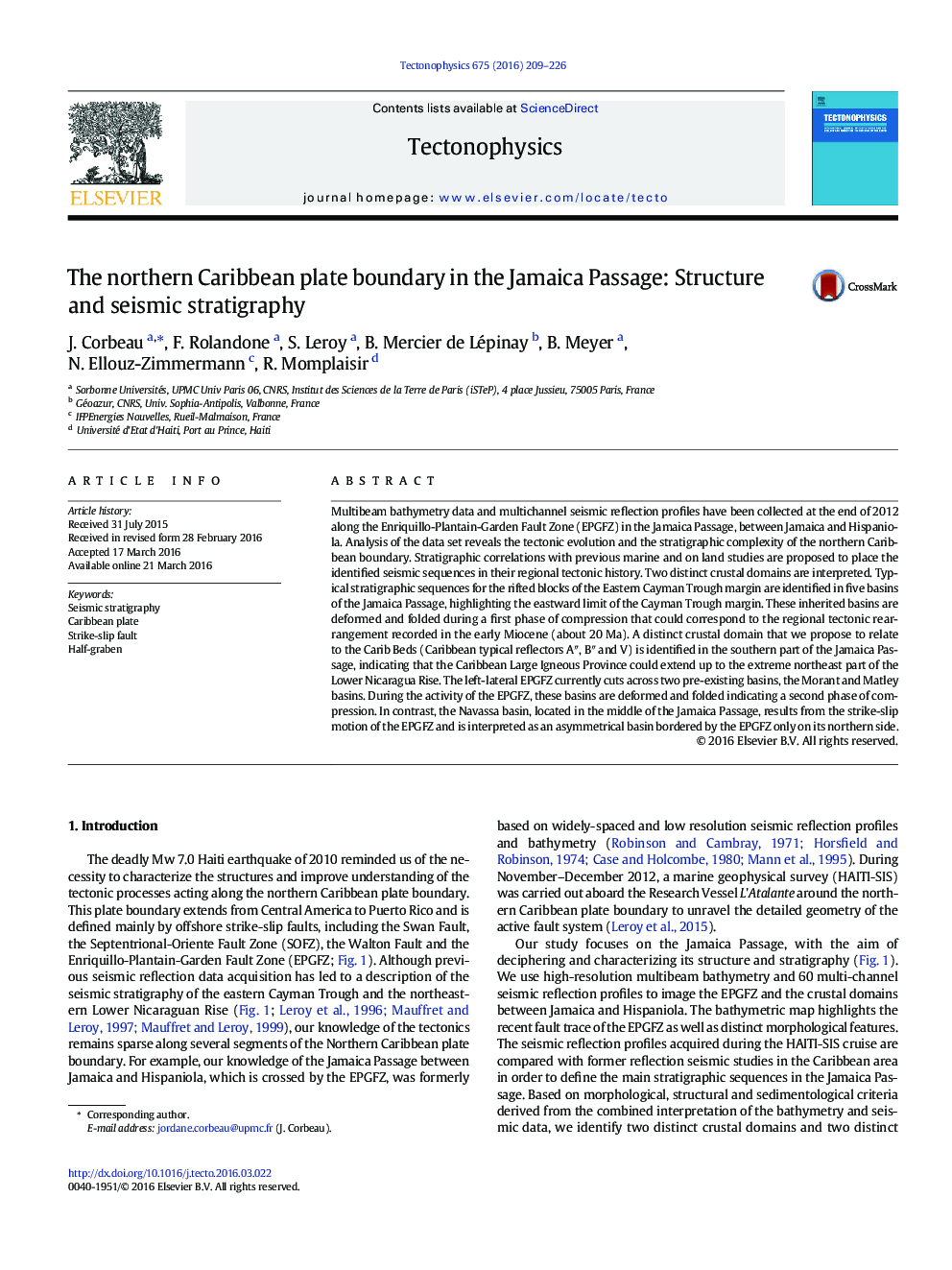| Article ID | Journal | Published Year | Pages | File Type |
|---|---|---|---|---|
| 4691294 | Tectonophysics | 2016 | 18 Pages |
•We explore the offshore Jamaica Passage along the northern Caribbean plate boundary.•Identified half-graben basins are related with the Eastern Cayman passive margin.•The strike-slip Enriquillo-Plantain-Garden Fault Zone cross-cut two half-grabens.•The activity of the fault led to the formation of an asymmetrical basin.•The inherited basins are deformed and folded during two phases of compression.
Multibeam bathymetry data and multichannel seismic reflection profiles have been collected at the end of 2012 along the Enriquillo-Plantain-Garden Fault Zone (EPGFZ) in the Jamaica Passage, between Jamaica and Hispaniola. Analysis of the data set reveals the tectonic evolution and the stratigraphic complexity of the northern Caribbean boundary. Stratigraphic correlations with previous marine and on land studies are proposed to place the identified seismic sequences in their regional tectonic history. Two distinct crustal domains are interpreted. Typical stratigraphic sequences for the rifted blocks of the Eastern Cayman Trough margin are identified in five basins of the Jamaica Passage, highlighting the eastward limit of the Cayman Trough margin. These inherited basins are deformed and folded during a first phase of compression that could correspond to the regional tectonic rearrangement recorded in the early Miocene (about 20 Ma). A distinct crustal domain that we propose to relate to the Carib Beds (Caribbean typical reflectors A″, B″ and V) is identified in the southern part of the Jamaica Passage, indicating that the Caribbean Large Igneous Province could extend up to the extreme northeast part of the Lower Nicaragua Rise. The left-lateral EPGFZ currently cuts across two pre-existing basins, the Morant and Matley basins. During the activity of the EPGFZ, these basins are deformed and folded indicating a second phase of compression. In contrast, the Navassa basin, located in the middle of the Jamaica Passage, results from the strike-slip motion of the EPGFZ and is interpreted as an asymmetrical basin bordered by the EPGFZ only on its northern side.
